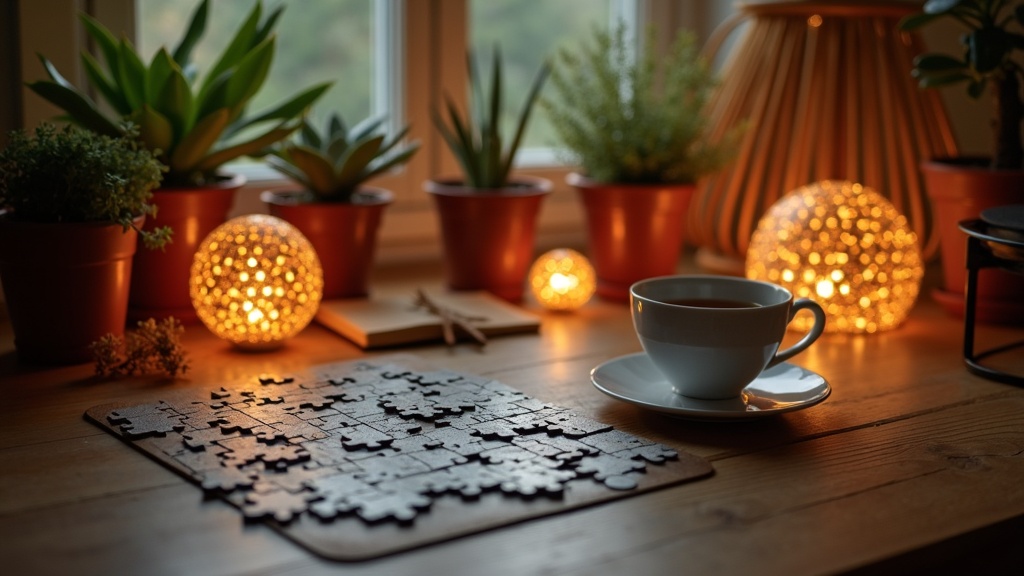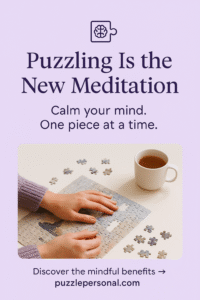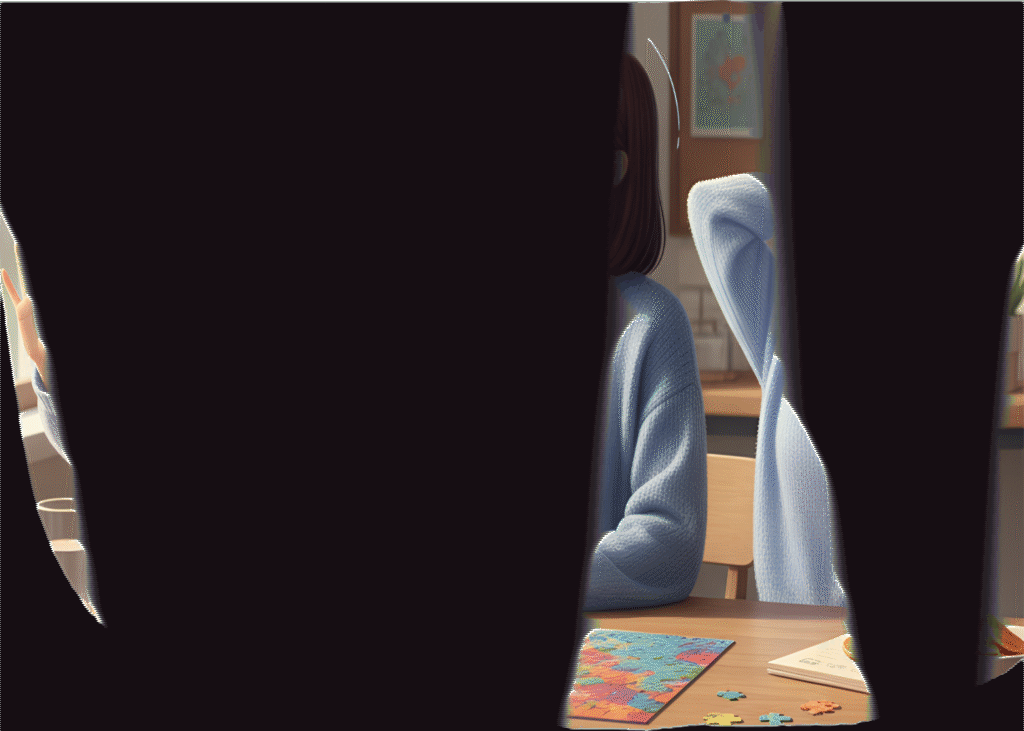Puzzles have quietly become a new favorite for many people seeking calm. While activities like meditation and yoga continue to get a lot of attention for promoting mindfulness, interest in puzzles as a go-to method for handling daily stress is growing quickly. I’ve found that puzzling delivers many of the same mental and emotional benefits as meditation, but in a playful, hands-on way that’s easy for just about anyone to try.

The Unique Mind Body Link in Puzzle Play
When I jump into a puzzle, I notice how much my mind sharpens and latches onto the pieces and patterns in front of me. Scientists say this focus happens because puzzling lights up both sides of your brain at once. The left hemisphere gets busy with logical sorting and strategy, while the right hemisphere helps you picture and recognize shapes and colors. This teamwork brings your focus into the present, drawing your attention away from worries and interruptions around you.
I often catch myself slipping into a relaxed “flow” state when I’m puzzling. This is similar to the calm awareness I feel during meditation, where outside thoughts drift away and my mind settles on the task. Psychologists say this flow can ground you in the here and now, reducing anxious thinking and giving your overstimulated mind a gentle break.
Gentle Stress Relief Without the Pressure
One thing I love about puzzles is that there is no pressure to “do it right.” With meditation, I sometimes wonder if I’m breathing correctly or sitting still enough. Puzzling never asks for silence, special equipment, or years of practice. I can curl up with a warm mug of tea, put on my favorite playlist, and settle into a cozy spot. The pieces become my only focus.
For people who spend all day in front of screens, puzzles offer a much-needed break from digital overstimulation. I find it soothing to physically handle the pieces and take my eyes off the blue light for a while. Puzzling also lets me unwind without needing to master tricky breathing techniques or struggle to clear my mind completely. There’s something satisfying about watching a blank tabletop transform, piece by piece, into an eye-catching final picture.
Science-Backed Benefits of Puzzling
Research suggests that puzzles do more than just entertain. Scientists have linked puzzling and similar activities with boosted memory, sharper reasoning, and better problem-solving skills. I’ve noticed my attention span and patience both improving with regular practice. Some days, even when the rest of my work feels jumbled, I leave a puzzle session feeling clearer and more focused.
Puzzling also gives your brain a reward kick by releasing dopamine, the same “feel good” neurotransmitter involved when you reach a goal or stumble upon something new. Each correct placement can feel like a small win, lifting your mood and sparking you to keep going. Over time, studies even show that puzzle play can help lower your heart rate and tone down stress hormones like cortisol, making it a real mood booster.
If you’re looking to keep your mind sharp as you age, puzzles might lend a hand too. Some research has shown that older adults who stick with hobbies like puzzling enjoy better mental agility than those who don’t. So whether you’re young or old, switching things up with puzzles can give your brain a healthy workout.
Building a Puzzling Ritual Into Everyday Life
I’ve found that adding puzzles to my daily or weekly routine helps me hit “reset,” especially after a tough day. I like to settle into puzzles for about twenty or thirty minutes, either before bed or alongside my morning coffee. Staying consistent has helped me enjoy the calming effects more than only puzzling in marathon stretches.
Puzzles are flexible. Whether I have just a handful of spare minutes or a whole evening to myself, I can adjust my puzzling habit to fit my schedule. Because it’s easy to leave a puzzle out and come back to it, I work at my own pace without losing steam or feeling pressured to “finish” in one sitting. It feels rewarding to watch the slow progress every time I return.
Mindfulness Hiding in Plain Sight
Many people think mindfulness requires sitting perfectly still or repeating a mantra. In my experience, puzzles offer a practical form of mindfulness you can develop almost by accident. I often notice how much attention I give to the shapes, colors, and edges on the table. Each piece requires patience and presence, and there’s very little room to ruminate on yesterday or worry about tomorrow.
If you’ve ever struggled with wandering thoughts, focusing on the physical elements of a puzzle can be a friendly way to redirect your mind. With each piece that locks into place, I feel a bit more anchored in the here and now. Over time, the patience and dedication I built during puzzles show up in other parts of my life, making me more present and attentive in daily routines.
As you step into puzzling more often, you might also notice yourself becoming better at tuning out noise and distractions in other activities. Taking these little mindful moments trains your brain to quiet the mental “chatter” that can otherwise be tough to escape.
Puzzles: Social Bonding or Solo Recharge
I enjoy puzzling alone as a way to reconnect with myself, but group puzzling can be just as valuable. When friends or family join in, there’s an easy sense of camaraderie that doesn’t rely on conversation. We share time, take pauses from small talk, and enjoy teamwork in a calm, judgment-free setting.
Puzzles have also sparked some next-level cool social trends recently. Puzzle cafés, clubs, and community swaps are popping up in cities everywhere, offering new chances to meet people and relax together without the awkwardness of forced conversation. Whether I’m working solo at home or joining friends at a local event, both experiences help me feel balanced and connected—and, sometimes, a bit inspired watching others’ puzzle tactics.
Easy Steps to Make Puzzling Your Meditation Practice
Jumpstarting your puzzle journey is simple. I recommend picking a puzzle theme or difficulty that feels fun, not overwhelming. On days when I’m low on energy, I go for larger pieces or picture-based puzzles. When I’m craving a challenge, I reach for something intricate, filled with detailed patterns or tons of colors.
The experience gets even better in a peaceful space. I like to clear a small area, add some soft lighting, cue up gentle background music, and ensure my workspace is comfy. Incorporating puzzles as a mindful ritual is straightforward:
- Pick a time of day that feels natural. I find early mornings or evenings work best, but any regular window in your day can help make it a habit.
- Stay tuned in to the process. Notice the click of each piece, the feel in your hand, and the picture coming together as you make progress.
- Put away your phone and other distractions. Permit yourself to be all in, even if it’s just for a few minutes.
- Let go of the need to finish fast. The real magic is in the journey, not the result. It’s fine to pause and come back later.
Some people also use puzzles as a bridge to other mindfulness practices. When my mind feels scattered, starting with a puzzle often makes it easier to settle into a short breathing exercise or soak in a moment of calm once I’m done.
If you want to add some variety, try puzzle games or apps designed to boost focus or memory. Just remember, the most soothing effects usually come from real, hands-on puzzles, so try to keep a physical puzzle in your rotation too.
Frequently Asked Questions About Puzzle Meditation
Here are a few questions I often get from friends or readers curious about puzzling as a mindfulness habit:
Q: How is puzzling different from traditional meditation?
A: Puzzling lets your hands and mind stay gently active, which can make it easier for some people to focus than the typical meditation format. There’s less stress about “emptying your mind,” and you see real, physical progress in front of you.
Q: Do I need any special skills?
A: Not at all. The only real requirements are curiosity and patience. You can start with easy puzzles and move to more complex ones as you get comfortable and confident.
Q: Can kids benefit from puzzle meditation?
A: Absolutely. Kids have fun with the playful side of puzzling and can build similar calming habits. Puzzles encourage attention, patience, and offer a break from screens for all ages.
Wrapping Up: Why I Think Puzzling Is Worth a Try
Swapping a meditation session for a puzzle every so often brings many of the same payoffs, including calm, clarity, and a gentle mental reset. From the science-backed perks to the joy of connecting with others over a shared task, puzzles have earned a spot in my mindfulness toolbox. If you want an easy, playful way to take care of your mind and mood, try puzzle meditation and track down how it changes your daily routine. There’s no pressure—just set out some pieces, take a deep breath, and see where it leads you next.



